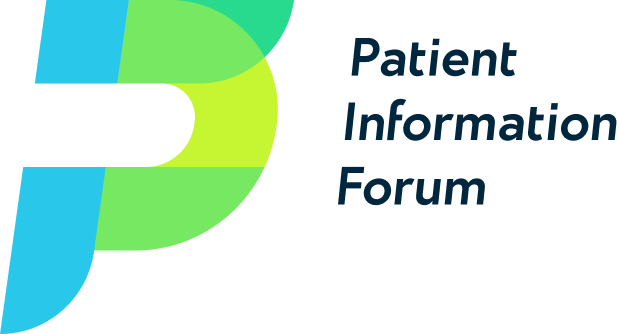Health inequalities, digital exclusion and the need for clear evidence-based, accessible information were highlighted during the COVID-19 crisis.
Our Health and Digital Literacy Survey carried out in October 2019 provided a pre-pandemic benchmark of how organisations were meeting the health and digital literacy needs of users.
We found only 13% had a health literacy policy in place and 50% assessed the equalities impact of digital projects.
Now, three years on, we are about to repeat the survey to see whether members have responded to our call to become health and digital literacy friendly.
Over the course of the pandemic we have been working hard on the recommendations we made when we published the data in 2020.
These are listed below with our actions in each area.
1. Incorporate health and digital literacy into health strategies of the four nations of the UK
We have long advocated for ‘access for all’ to trusted health information in health and social care.
This objective was made explicit in PIF’s 2022 strategy refresh which will guide our work for the next three years.
Published in January 2022 it identifies ‘inclusion’ as a key objective: "PIF advocates for health information to be available to all, meeting health and digital literacy, accessibility and cultural needs."
2. Health information producers should aspire to become health literacy friendly
More than 100 cross sector bodies have signed our Health and Digital Literacy Charter and have pledged to become health and digital literacy friendly.
Of those, 45 signed an open letter calling all organisations in health to work towards this aspiration.
We have pursued this objective through the work of the Patient Coalition for AI, Data and Digital Tech in Health.
We launched a programme of CPD accredited training as a result of member needs identified in the 2019 survey. To date more than 300 people have taken part in PIF training.
3. NICE to develop health literacy guidelines and recognise health and digital literacy
PIF lobbied to ensure health literacy was addressed in the NICE shared decision making guideline published last summer.
We also sat on the oversight panel for the NICE Standards Framework for Shared Decision Making Support Tools.
It says decision support tools should use ‘everyday language that is widely understood, or simpler language where necessary, ideally for a reading age of 9-11'.
We were also pleased to consult with NIHR on the Health Literacy Evidence review published in June 2022
4. Health-literacy friendly patient information as a requirement in national standards and guidelines on shared decision making
PIF was part of the project board for the development of the PRSB standard on Shared Decision Making and argued consistently for the health literacy to be considered in the standard.
We carried out a member survey on the use of readability tools and the use of a target reading age in health information.
The results were shared with NHS England as part of the review of its Content Manual.
The recommendation to aim for a target reading age of 9-11 in health information was retained.
We also collaborated with NHS England on the development of a voluntary content standard for NHS organisations.
The resulting standard reflects the PIF TICK criteria for trusted health information and will allow Trusts to post video to YouTube’s health shelf.
This summer we joined the NHSE Maternity Transformation Taskforce on informed decision making and will advocate for health and digital literacy friendly outputs.
5. Develop specified UK standards on health literacy within the PIF TICK criteria
We appointed an expert panel to review the PIF TICK criteria at the beginning of this year.
The panel is made up of members and independent experts.
The new criteria, launched in June, set out best practice in this area.
6. Create good practice guidance
To mark our 25th anniversary year we launched a series of good practice guidance.
New guides on translated health information and writing in plain English have proved popular.
We also produced campaigning posters on inclusive language and translation.
7. Create a central NHS repository for health-literate information in English and other commonly spoken languages
During the first lockdown we created a central hub so members could share new resources on COVID-19.
We are now collaborating with the Yorks and Humberside Academic Science Network on the creation of a hub for high quality translated material in respiratory disease.
We are also working with blood cancer charities to create a central mechanism for the sharing of content in this complex area of medicine.
A round table to define a model information production process for culturally appropriate translated material will be held in September.
8. Raise awareness of the WHO definition of digital health literacy
We have ensured this definition is promoted in all our material and training.
We have also joined the Board of the Media and Information Literacy Alliance to ensure digital health literacy is considered alongside strategies to tackle misinformation.
9. Support community motivation and skills improvement
We have worked in partnership with Connected Nottinghamshire on a programme to put health and digital literacy at the heart of its community implementation work on the NHS App.
The learnings from this project have been shared nationally through the NHSE improvement network.
This year we continued this work with a co production panel to support shared decision- making in MSK.
This is a partnership with the Patients Association.
10. Organisations should consider the equalities impact of digital tools
Lockdowns made digital skills and access essential for people to use health information and access health and care services.
We will only know how much progress has been made in this area if you, our members, complete our 2022 survey.
This year we will ask members a new question: "Should health and digital literacy be considered a ‘vital sign’ equivalent to being housebound in terms of accessing health and care information and services?"
We would love to know what you think.
The survey will run throughout Health Literacy month 2022.

